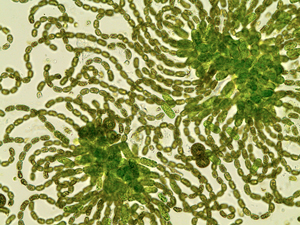Overview
 The goal of the project is to improve understanding of nutrient dynamics and cyanobacterial and harmful algal bloom (cHAB) occurrences on Lake of the Woods. The focus will be on researching sources, causes, transport, composition, and toxicity of cHABs and improve monitoring throughout Lake of the Woods. Results will document the status, trends, and drivers of blooms, and the risk they may pose, to inform on appropriate management and mitigation strategies.
The goal of the project is to improve understanding of nutrient dynamics and cyanobacterial and harmful algal bloom (cHAB) occurrences on Lake of the Woods. The focus will be on researching sources, causes, transport, composition, and toxicity of cHABs and improve monitoring throughout Lake of the Woods. Results will document the status, trends, and drivers of blooms, and the risk they may pose, to inform on appropriate management and mitigation strategies.Location of Study
Lake of the Woods
Research Profile
Arthur Zastepa, Research Scientist with Environment and Climate Change Canada (ECCC)
I am a research scientist at the Canada Centre for Inland Waters at Environment and Climate Change Canada. I am actively involved in collaborative work with toxigenic and harmful algal blooms and source-water impairment in systems across Canada including in the Lake of the Woods, Lake Winnipeg, Lake Erie, and Lake Ontario. My research examines the factors regulating the abundance and diversity of microbes, their chemical ecology, and the fate and consequences of toxins produced in these systems. I have developed expertise in the application of bioanalytical technologies and paleolimnological tools to aquatic ecosystem research and has led the design and execution of large-scale field studies and surveys.
Description of Study
The goal of the project is to improve understanding of nutrient dynamics and cyanobacterial and harmful algal bloom (cHAB) occurrences on Lake of the Woods. The focus will be on researching sources, causes, transport, composition, and toxicity of cHABs and improve monitoring throughout Lake of the Woods. Results will document the status, trends, and drivers of blooms, and the risk they may pose, to inform on appropriate management and mitigation strategies. Specifically, the work aims to:
- Identify the origin, transport, and composition of blooms
- Determine the sources of cyanobacterial toxins
- Investigate near-shore nutrient loading from shoreline erosion and development
Assess the degree of nutrient loading from sediment - Further develop tools to monitor the timing, extent and severity of blooms
Prelimary Results
